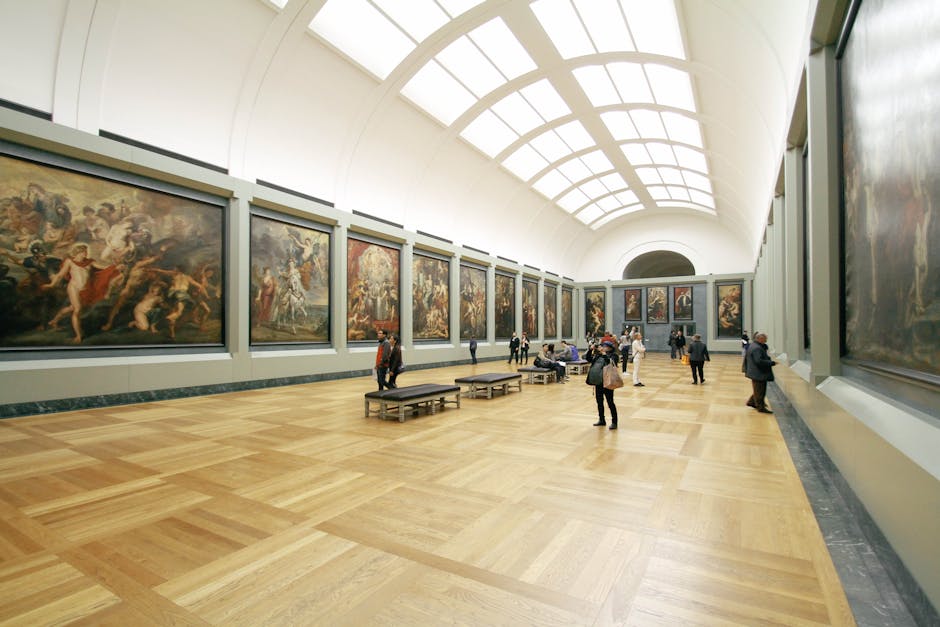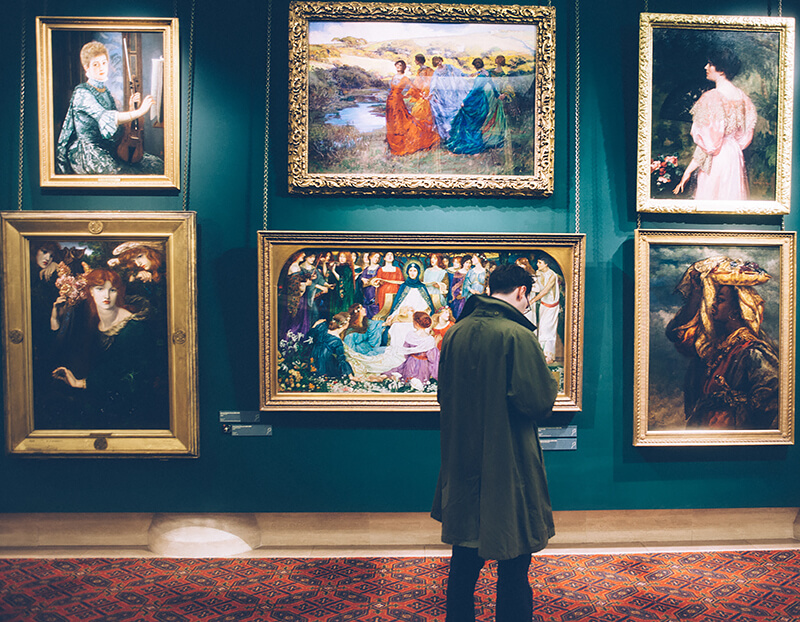Barriers and Breakthroughs
Women artists in the Baroque period faced many challenges in a male-dominated art world. However, several talented women managed to overcome these obstacles and make significant contributions to the field.
Family connections often provided an entry point for women artists. Elisabeth Sirani and Catharina van Hemessen, born into artistic families, were able to develop their talents in their fathers' studios. Others, like Maria Sibylla Merian, had to forge their own paths through determination and skill.
With limited formal education available, women found creative ways to learn. Sofonisba Anguissola's apprenticeship with Michelangelo was a rare opportunity. Judith Leyster trained under a master painter before opening her own workshop.
Many artists balanced their work with societal expectations of marriage and motherhood. Mary Beale turned her home into a studio, involving her family in her artistic pursuits.
Institutional barriers were particularly challenging. Artemisia Gentileschi's admission to the Accademia di Arte del Disegno in Florence was a notable exception, as most prestigious art guilds and academies excluded women.
Recognition was often tinged with skepticism. Works by Gentileschi and Leyster were sometimes misattributed to male artists, revealing the biases of the time.
Despite these hurdles, many women artists found success through alternative patronage. Giovanna Garzoni and Lavinia Fontana gained commissions from European courts and high society, establishing successful careers outside traditional institutions.
These pioneering women left an indelible mark on the Baroque period, challenging norms and paving the way for future generations of female artists.
Pioneering Female Artists
Anna Waser's skill in portraiture and miniatures earned her the role of court painter, a remarkable achievement for a woman of her time. Her vibrant work boldly declared her artistic identity.
Maria Sibylla Merian revolutionized botanical illustration by blending art and science. Her meticulous studies of insect metamorphosis in works like Metamorphosis insectorum Surinamensium showcased her innovative spirit and keen observation.
Artemisia Gentileschi's powerful paintings, such as Judith Slaying Holofernes, challenged viewers with their emotional depth and depictions of strong women. Her fight for recognition in a resistant art world left a lasting impact.
These artists did more than create; they reshaped the artistic landscape of their time. Their persistence and passion expanded the boundaries of possibility, inspiring generations to come.
Artistic Techniques and Styles
Women artists of the Baroque period excelled in various genres, each bringing unique perspectives to their work.
In portraiture, Sofonisba Anguissola and Lavinia Fontana captured the inner lives of their subjects with sensitivity and realism. Anguissola's focus on expressions and subtle compositions offered insight into her sitters' personalities. Fontana combined Mannerist grandeur with attention to detail, elevating her portraits beyond mere decoration.
Still life painting flourished under artists like Clara Peeters and Josefa de Ayala. Peeters imbued ordinary objects with life and meaning, while Ayala's compositions balanced color and form to suggest prosperity and abundance.
Maria Sibylla Merian's natural studies bridged art and science, capturing life cycles with precision and wonder. Her work encouraged viewers to see the world anew.
These artists' diverse techniques and styles reflected their dedication to craft and personal expression. They participated in the Baroque's dramatic dialogue while evolving it into a more inclusive narrative, leaving a legacy that continues to inspire.
Legacy and Recognition
The contributions of Baroque women artists, long overlooked, are now being rediscovered and celebrated. Modern scholarship and curatorial efforts are illuminating their profound impact on art history.
Recent decades have seen art historians unearthing the achievements of artists like Artemisia Gentileschi, Sofonisba Anguissola, and Judith Leyster. Their reintegration into museum exhibitions and art textbooks is reshaping our understanding of the Baroque period.
Contemporary exhibitions, such as those at the Meadows Museum in Dallas featuring Josefa de Ayala, provide platforms for these artists to receive well-deserved attention. Museums are revising permanent collections, hosting symposiums, and organizing thematic exhibitions to highlight women's perspectives and experiences.
This recognition extends beyond academia. Today's artists draw inspiration from these trailblazers, finding parallels in their own journeys. Social media campaigns, documentaries, and public lectures are bringing these artists' stories to wider audiences.
By embracing the legacies of Baroque women artists, we engage with stories of resilience and discover a richer, more inclusive art history. Their perseverance in the face of adversity continues to inspire, reminding us of art's power as a tool for expression and change.

In recognizing the contributions of Baroque women artists, we honor their place in history and enrich our understanding of art's potential to shape society. Their stories of creativity and resilience continue to inspire, highlighting the enduring power of art across time.
- Frick C, Biancani S, Nicholson ESG. Italian Women Artists: From Renaissance to Baroque. Milan: Skira; 2007.
- Füssli JC. Geschichte der besten Künstler in der Schweiz. Zurich: Orell, Gessner, Füssli und Compagnie; 1769-1779.
- National Museum of Women in the Arts. Women Artists of the Dutch Golden Age. Washington, DC: NMWA; 2019.
- Gingeras A. Elisabetta Zangrandi: Musee Imaginaire. Sag Harbor: Keyes Gallery; 2023.























